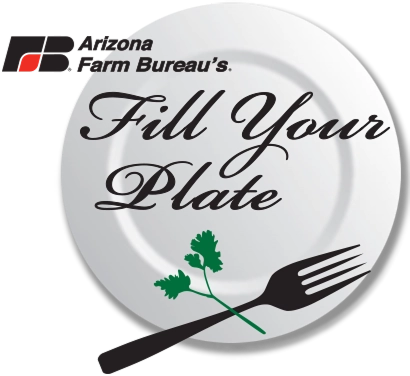Blog
My Best Tips for Healthy Eating in 2024

Happy New Year and welcome to 2024! As we step into this new year, many of us have resolutions and goals aimed at improving various aspects of our lives — and one of the foremost is undoubtedly focusing on healthy eating. Making healthier food choices lays the foundation for overall well-being, influencing everything from our mood to our energy levels and long-term health. To help you on this journey, I’ve compiled some essential priorities for healthy eating, along with some good resources for further exploration.
1. Emphasize the Basics of Nutrition
As we venture into a new year, it’s crucial to remember the fundamentals of nutrition. The basics include a balanced intake of fruits, vegetables, proteins, dairy, and complex carbohydrates. According to the United States Department of Agriculture (USDA), eating a variety of these food groups ensures that you provide your body with essential nutrients.
- Fruits and Vegetables: Aim for a colorful plate! Different colors represent different nutrients, so by consuming a variety of fruits and vegetables, you can meet your body’s diverse nutritional needs. The CDC suggests that adults should consume about 2 to 3 cups of vegetables and 1.5 to 2 cups of fruits daily.
- Proteins: Include sources such as beef, poultry, eggs, fish, and nuts. Proteins are essential for repairing and building tissues. A Harvard study highlights the importance of choosing lean proteins, such as chicken and fish, and incorporating plant-based proteins like beans and legumes.
- Dairy: Opt for low-fat or fat-free dairy options. Dairy provides calcium, which is critical for bone health. Check out the National Dairy Council for more insights on the role of dairy in your diet.
- Complex Carbohydrates: Foods like whole grains (brown rice, quinoa, whole wheat bread) are not only nutritious but also provide lasting energy. The Whole Grains Council outlines the benefits of including whole grains in your diet.

2. Choose Whole Foods Over Processed Options
When shopping for groceries, prefer foods in their purest or most basic form. Instead of buying pre-packaged items, visit the meat counter, dairy case, and produce aisle. Whole foods are often less processed and packed with nutrients compared to their boxed counterparts. For instance, a study published in the American Journal of Clinical Nutrition emphasizes how whole foods can contribute to improved health outcomes.
It’s alarming to note that the average American diet consists of a high percentage of processed foods. These foods often contain added sugars, sodium, and unhealthy fats that can lead to various health issues. By opting for fresh produce, whole grains, and unprocessed meats, we can nourish our bodies with the nutrients they truly need.
3. Enjoy Your Food
Healthy eating doesn’t mean sacrificing enjoyment. In fact, enjoying your food is crucial for long-term adherence to a healthy lifestyle. For many people, eating is also a cultural and social experience, and depriving ourselves of the foods we love can lead to feelings of frustration. Focus on what you enjoy! If you love beef but aren’t fond of fish, it’s perfectly fine to stick to beef while incorporating a variety of vegetables and whole grains to balance your plate.
A research study highlights that being mindful and enjoying your food can enhance satisfaction and help regulate portion sizes, ultimately leading to healthier eating habits.
4. Make a Meal Plan
One of the best strategies for healthy eating is to have a plan. At Fill Your Plate, we always encourage creating a grocery list based on your meal plan. Meal planning not only saves time and money but also helps you make healthier choices.
- Create Your Menu: Dedicate some time each week to decide on meals. Include a variety of proteins, grains, and plenty of produce.
- Make a Shopping List: After deciding on your meals, list out all the necessary ingredients to avoid impulse buys at the grocery store.
For additional tips, consider exploring Meal Prep on Fleek, which offers resources and recipes for your weekly meal prep.
5. Cut Out Added Sugars
Reducing sugar intake is vital for maintaining good health. Excessive sugar consumption has been linked to various health issues, including obesity, type 2 diabetes, and heart disease. The American Heart Association recommends that women limit their added sugars to about 6 teaspoons (25 grams) and men to 9 teaspoons (38 grams) per day.
Sugary beverages are one of the biggest contributors to excess sugar in our diets. According to the USDA, it’s a good idea to opt for water, herbal teas, or other beverages without added sugars most of the time. Treat yourself to sugary foods occasionally, but try to limit them in your everyday diet for better health.
6. Watch Your Portion Sizes
Portion control is one of the simplest ways to manage weight and improve eating habits. Even healthy foods can contribute to weight gain if consumed in excessive amounts. Here are some practical tips to help manage portion sizes:
- Use Smaller Plates: Serving food on smaller dishes can trick your brain into thinking you’re getting more food.
- Pre-portion Snacks: Instead of eating straight from the package, portion out snacks into smaller containers.
- Listen to Your Body: Eat slowly and pay attention to hunger cues. Are you eating because you’re hungry or simply out of habit?
Research shows that those who practice portion control tend to consume fewer calories and maintain a healthy weight.
7. Stay Informed and Inspired
Finding the right balance of healthy eating is a never-ending journey. However, it’s also empowering to be in control of our diet and health choices. Utilize various resources to learn about nutrition, cooking, and meal prep.
- Follow Healthy Eating Blogs: Websites like Fill Your Plate are filled with tips and articles on healthy eating.
- Cookbooks and Online Recipes: Explore new recipes that utilize whole foods and nutritious ingredients. Websites like Skinnytaste offer healthy cooking options that cater to various tastes and diet preferences.
- Educational Resources: Websites such as the Academy of Nutrition and Dietetics provide valuable information regarding nutrition and healthy eating.
Conclusion
Healthy eating is not just about making drastic changes overnight; it’s about creating sustainable habits that foster a healthy relationship with food. As we embrace 2024, let’s prioritize nutritious foods, mindful eating, and planning to truly take charge of our health. Remember, it’s all about finding a balance and enjoying the foods you love while incorporating healthier choices.
So, let’s make this year a year of healthy eating, filled with delicious meals and energized bodies. Cheers to a fantastic 2024, and enjoy every bite along the way!
For more tips, feel free to explore the Fill Your Plate blog for further articles on healthy eating techniques and practices. Happy New Year!
By Julie Murphree, Arizona Farm Bureau Strategic Communications Director

















